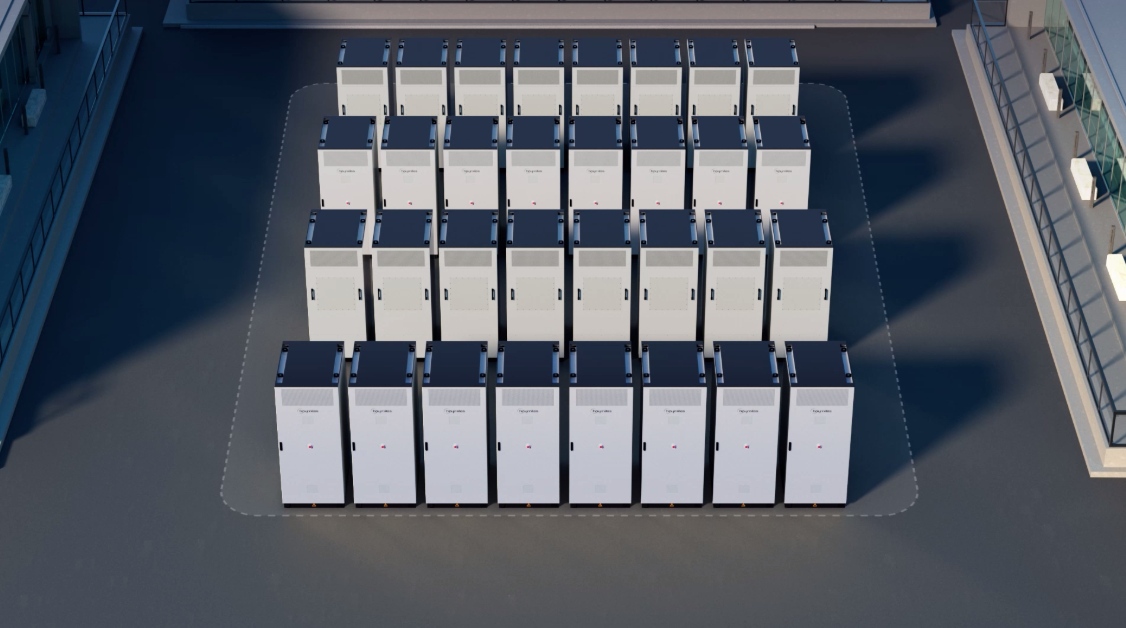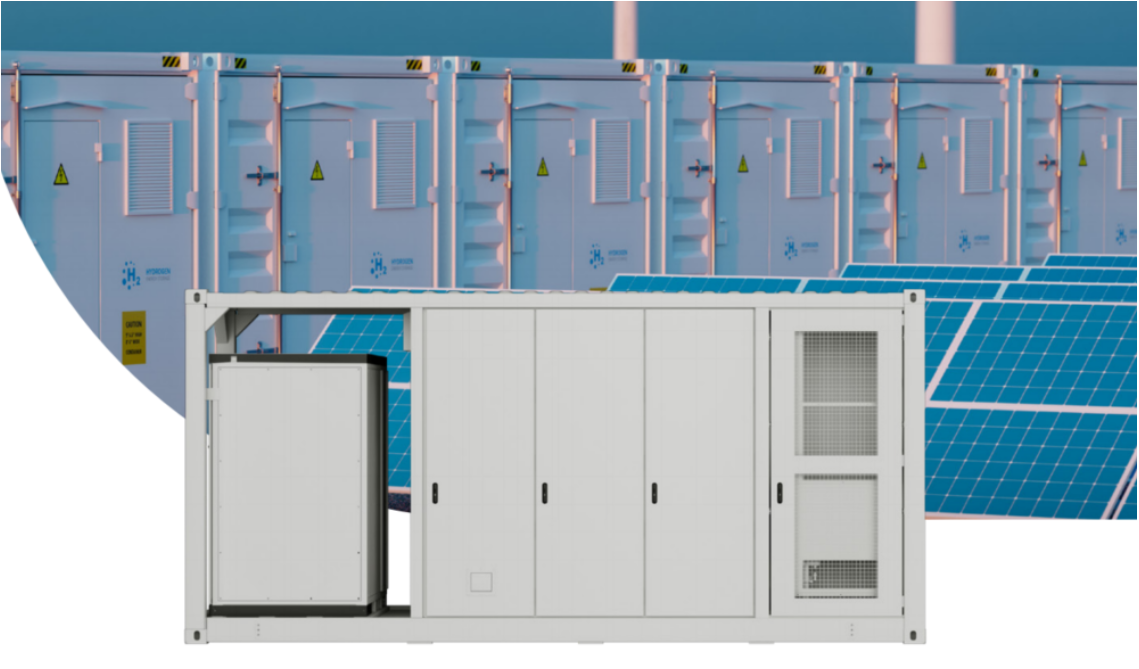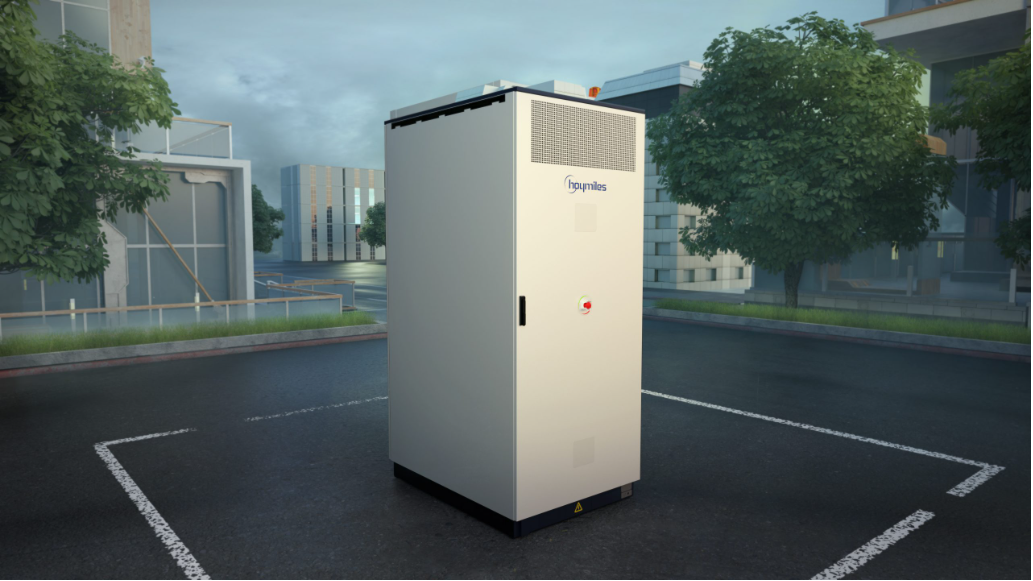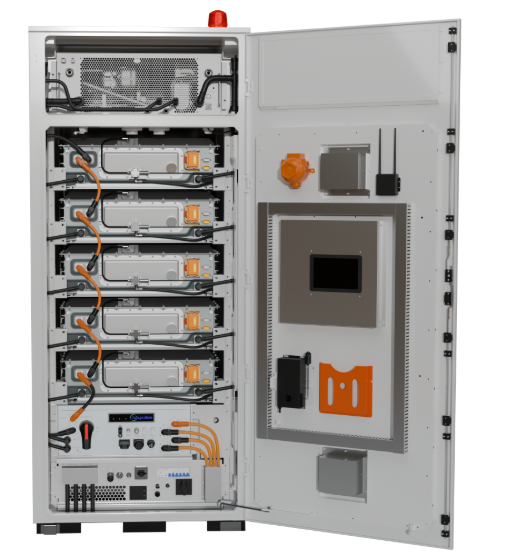Complete Guide to Commercial and Industrial Battery Storage Systems

As the global energy landscape shifts toward decarbonization and electrification, both commercial and utility sectors are increasing the investment in renewable energy. Among the most promising advancements is the deployment of commercial and industrial energy storage systems that not only enables a more resilient and flexible energy infrastructure but also enhances cost savings, energy independence, and sustainability outcomes for businesses and the grid.
In this blog, we'll break down the fundamentals of C&I battery storage and explore how Hoymiles' latest liquid-cooling battery storage system contributes to the future of solar energy.

What are commercial energy storage systems?
A commercial energy storage system allows facilities like businesses, industrial parks, charging stations and virtual power plants (VPP) to control how they use energy, set electricity prices and tackle blackouts in a flexible and smart way. It typically involves advanced battery technologies coupled with a power conversion system (PCS), battery management system (BMS), and energy management system (EMS).
Unlike commercial systems for small and medium businesses, large-scale commercial systems usually range from 100 kW to MW-level utility projects and are engineered for higher capacities, scalability, and complex operational needs. Check out the battery storage guide for small businesses.
Commercial battery storage systems can either be used on-grid or off-grid. On-grid applications offer functions such as peak demand charge reduction, renewable energy sources integration, and power backup during outages. In contrast, off-grid applications are often used in remote locations or operations that require complete energy independence, ensuring uninterrupted power supply even without grid access.
In a word, commercial energy storage systems are the backbone of modern energy strategies—offering businesses greater control, stability, and efficiency in an increasingly unpredictable energy landscape.
What are the components of a commercial battery storage system?
What are the components of a commercial battery storage system?
Power Conversion Systems (PCS)
A Power Conversion System (PCS) is a critical component in energy storage systems. It manages the bidirectional flow of electricity between the grid, batteries, and end-use applications. It converts alternating current (AC) to direct current (DC) during charging and DC to AC during discharging. PCS ensures efficient energy transfer, supports grid stability, and enables functions like peak shaving, load shifting, and backup power. Advanced PCS units also support seamless integration with renewable energy sources and offer intelligent control and protection features.
Battery
Battery is the core component responsible for storing electricity from renewables or the grid. Unlike residential batteries, which are typically compact units, commercial systems integrate multiple battery packs into a containerized cabinet to meet higher capacity demands. These lithium-ion battery packs offer high energy density, long cycle life, and modular scalability.
Advanced thermal management and safety systems ensure reliable performance in diverse settings. Whether for peak shaving, load shifting, or backup power, containerized battery setups deliver the scale and flexibility required for industrial and commercial energy needs.
Advanced thermal management and safety systems ensure reliable performance in diverse settings. Whether for peak shaving, load shifting, or backup power, containerized battery setups deliver the scale and flexibility required for industrial and commercial energy needs.

Hoymiles HoyCore Outdoor Battery System
It should be noted that some products combine PCS and battery systems into a complete all-in-one system to simplify commissioning.
How do commercial battery storage systems cut costs and increase energy savings?
In commercial and industrial (C&I) environments, energy storage brings both economic and operational value:
Peak shaving and load shifting: For commercial and industrial (C&I) users, utility companies typically structure electricity tariffs based not just on total energy consumed, but also on peak demand—the highest amount of power drawn at any one time during the billing period. That means utilities have to maintain the running of expensive infrastructure and capacity to meet large users' instantaneous power needs, even if those peak levels are rarely reached. That is why utilities impose demand charges to recover these costs. Therefore, commercial energy storage systems can help commercial owners better manage electricity consumption, control battery charge and discharge based on operation conditions, and shift the peak loads to improve system efficiency.
Demand charge reduction: Many utilities impose high fees based on peak usage. By discharging stored energy during high-load periods, businesses can avoid these charges.
Time-of-use arbitrage: Businesses can charge their batteries when electricity is cheap (e.g., overnight or during midday solar peaks) and discharge when rates are high.
Backup power: For mission-critical facilities such as hospitals or data centers, a commercial energy storage systemensures continuity during grid outages.
Carbon reduction: Pairing solar and storage reduces a facility's reliance on fossil fuels, enabling more sustainable operations.
What are the solutions for your commercial and industrial energy storage system?
At Hoymiles, we offer a comprehensive suite of commercial battery storage solutions tailored to meet the growing energy needs of businesses, industrial facilities, and utility-scale developers. Our product portfolio is designed for flexibility, scalability, and intelligent energy management, ensuring seamless integration with both new and existing energy systems.
Containerized Battery Energy Storage System (BESS)
Containerized Battery Energy Storage Systems, or BESS, are modular, scalable energy storage solutions that integrate batteries, PCS, BMS, EMS, and thermal management within a standard container. They store energy from renewables or the grid and discharge it when needed, enabling peak shaving, load shifting, and grid support. With convenient deployment and robust protection, containerized BESS enhances renewable energy integration, improves energy efficiency, and contributes to grid stability for both utility-scale and large commercial applications. The system is usually used for MW-level utility-scale power plants.

HoyPrime Containerized Battery Energy Storage System
All-in-One Battery Cabinets
Similar to containerized BESS, all-in-one battery cabinet is also an energy storage solution that combines PCS, BMS and EMS, except that it is for medium and large commercial projects. Offering air cooling and liquid cooling options, all-in-one battery cabinet can be used for virtual power plants (VPP), EV charging stations, microgrids and emergency backup power.

Hoymiles HoyUltra 2 Fully Liquid Cooling C&I Battery System
Designing a future-proof commercial battery storage system with Hoymiles
Integrating PCS, battery, BMS (battery management system), and TMS (thermal management system) into a single unit, Hoymiles' HoyUltra 2 is a next-generation fully liquid cooling battery system for commercial and industrial settings.
With a capacity of 261 kWh and supporting 16 units installed in parallel, HoyUltra 2 is engineered to meet the complex needs of developers, operators, and C&I end-users. Purpose-built for performance, safety, and adaptability, the system is designed to support the evolving demands of energy transition across diverse scenarios—from factories and business parks to microgrids and virtual power plants even in high-temperature or high-altitude environments.
HoyUltra 2 is adaptable to a wide range of scenarios, including:
Power Supply Type | Scenario |
Storage-Only PV-Storage Combined | Small and medium-sized C&I Large-scale zero-carbon park VPP Distributed energy storage |
PV-ESS-Charging Coupling | PV, energy storage and charging power plant |
Microgrid | Park microgrid Island microgrid Solar-storage-generator microgrid |
Emergency Backup Power | Base station Industrial production Special medical equipment |
Smart fully liquid-cooling for high power density and efficiency
Hoymiles 's commercial and industrial energy storage system HoyUltra 2 utilizes an advanced liquid cooling technology that delivers over 20% higher power density and up to 30% lower energy consumption compared to traditional air-cooling solutions.
A less than 2°C temperature differential between cells and IGBT modules ensures uniform thermal management, extending component lifespan while maintaining optimal system stability—even under harsh conditions up to 50°C or at altitudes of 4,000 meters. With peak round-trip efficiency reaching 90.3%, it enables reliable performance with minimal losses.
Cloud-edge collaboration, smart and user-friendly
Our intelligent control system features edge-based EMS decision-making for rapid fault response (<100ms) and >99% site availability. Meanwhile, cloud-based integration with Hoymiles' S-Miles Cloud enables centralized monitoring, batch strategy deployment, real-time fault detection, and predictive maintenance—optimizing performance and reducing O&M costs.
Comprehensive safety, ultimate protection
HoyUltra 2 adopts a robust 3-level, 6-type safety functionality that includes early warning, PACK-level and cabin fire suppression, interlocked ventilation, and explosion relief—all supported by cloud-edge intelligence. This layered approach minimizes fire risk and ensures long-term operational stability.

Fully integrated for easy O&M
Featuring modular components and quick-disconnect terminals, the system supports rapid, zero-leakage maintenance, reducing O&M time by 60%. Parallel scaling up to 16 units for on-grid operation and 8 units for off-grid application allows capacity expansion from 125kW to max. 2MW, saving footprint by 35%.
Diverse scenarios, all-round adaptability
With low-noise operation (≤60 dB), transformer-free off-grid support, and seamless compatibility with third-party VPP platforms, Hoymiles' solution adapts to a wide range of use cases. Certified to IP55 and C5 anti-corrosion standards, it ensures 15+ years of durability even in high-salinity or harsh environments.
Industry examples: How they save costs and cut emissions with energy storage
Hoymiles Powers Latvia's Largest Energy Storage Project
Hoymiles delivered 20 MWh of energy storage capacity to Tārgale Wind Park, supporting Latvia’s clean energy leadership in the Baltic region.
HoyPrime 44 MWh battery containers + 3,450 kW PCS units
Enables energy shifting during wind variability
Enhances grid stability and energy security
€7M project investment led by Utilitas
Scalable, utility-grade solution for renewable integration
Hoymiles Powers 150MW/300MWh Wind-Storage Project in Hebei, China
Hoymiles delivered its HoyPrime containerized energy storage system to support a 1 GW wind power initiative in Zhangbei, overcoming harsh weather and altitude challenges.
Fully liquid-cooled system ensures high efficiency and durability
Operates in extreme climates: –35°C to 60°
CMillisecond-level grid response for stable renewable integration
20%+ land area savings via modular design
Multi-layer safety protections including triple-tier firefighting
Discover how Hoymiles' scalable, high-performance commercial energy storage solutions can optimize your energy use, reduce costs, and support a greener future.
Subscribe to our newsletter andget the latest news!
